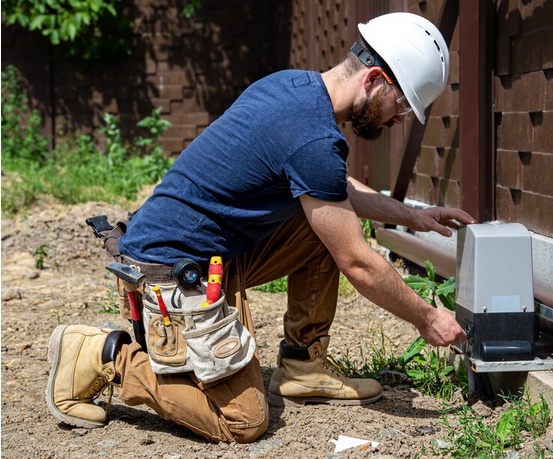In the intricate tapestry of modern infrastructure maintenance, the significance of Closed-Circuit Television (CCTV) drain surveys shines brightly. These surveys have evolved into an invaluable tool for unraveling concealed issues within drainage systems. As technological advancements redefine conventional practices, CCTV drain surveys emerge as a pivotal player in addressing and preventing drainage problems. This guide aims to provide a comprehensive understanding of the role of CCTV surveys in drain diagnosis, shedding light on their benefits, procedural aspects, and their crucial role in maintaining efficient drainage systems.
Understanding the Essence of CCTV Drain Surveys
CCTV drain surveys entail the utilization of specialized cameras to scrutinize the interior of drainage systems. These cutting-edge cameras are meticulously designed to navigate through pipes and conduits, delivering real-time visual insights into the conditions within. The primary objective is to identify and diagnose a spectrum of issues, ranging from blockages and leaks to cracks and structural impairments.
Benefits of CCTV Drain Surveys
-
Precision and Accuracy: The foremost advantage of CCTV drain surveys lies in their unparalleled precision and accuracy. Unlike traditional methods that rely on speculative diagnoses, CCTV cameras offer a meticulous and close-up inspection of the entire drainage system. This enables professionals to pinpoint the exact location and nature of the problem.
-
Time and Cost-Efficiency: Traditional drain inspections often involve cumbersome excavation processes, leading to escalated costs and prolonged project timelines. In contrast, CCTV drain surveys eliminate the need for unnecessary digging. This not only saves time but also significantly reduces overall project expenses.
-
Proactive Maintenance: CCTV drain surveys extend their utility beyond mere issue resolution; they play a pivotal role in proactive maintenance. By identifying potential concerns at an early stage, property owners can take preventative measures, averting severe damage and consequently saving both time and financial resources.
-
Non-Intrusive Inspection: A notable advantage of CCTV drain surveys is their non-intrusive nature. Unlike conventional methods that disrupt daily activities and cause inconveniences, this technology ensures minimal disturbance to the surrounding environment. This makes it an ideal choice for a diverse array of properties, both residential and commercial.
The CCTV Drain Survey Process
-
Preparation: Prior to initiating a CCTV drain survey, meticulous preparation is essential. This involves ensuring that the pipes are free from debris that might obstruct the camera's view. High-pressure water jets or mechanical means are often employed to cleanse the pipes, ensuring optimal conditions for the survey.
-
Camera Insertion: Once the drainage system is prepared, the specialized CCTV camera is delicately inserted into the pipes. Equipped with powerful lights, these cameras provide clear visibility in the dark and confined spaces of the drainage system.
-
Real-Time Monitoring: As the camera navigates through the labyrinth of pipes, the footage is transmitted in real-time to a monitor. This live feed empowers the inspection team to assess the condition of the pipes promptly, facilitating on-the-spot decision-making.
-
Data Analysis and Reporting: The recorded footage undergoes meticulous analysis, culminating in a comprehensive report. This report includes details about any issues detected, their severity, and recommendations for necessary repairs or maintenance, providing a roadmap for efficient issue resolution.
Common Issues Detected by CCTV Drain Surveys
-
Blockages: CCTV drain surveys excel in identifying blockages caused by debris, grease, or foreign objects. Early detection of these blockages is paramount in preventing sewer backups and potential flooding.
-
Leaks and Cracks: The high-resolution cameras used in CCTV surveys can detect even the minutest leaks and cracks in pipes. Timely identification and addressing of these issues mitigate the risk of water damage and soil erosion.
-
Tree Root Infiltration: Tree roots seeking moisture can infiltrate drainage pipes, causing extensive damage. CCTV surveys efficiently identify root intrusion, enabling targeted root removal without resorting to disruptive excavation.
-
Structural Impairments: Over time, pipes are subject to wear and tear, leading to structural impairments. CCTV surveys play a pivotal role in identifying these issues, facilitating timely repairs and averting more significant problems.
Conclusion
Cctv survey of drains have emerged as a beacon of innovation in the domain of drainage system inspections and maintenance. Their precision, efficiency, and non-intrusive characteristics render them indispensable for property owners and businesses alike. By unmasking hidden issues before they escalate, CCTV drain surveys contribute not only to cost savings but also to the overall longevity of drainage systems. As technology continues its relentless progression, these surveys are poised to become even more integral, heralding a new era in sustainable and efficient property management. Embracing this advanced approach to drain diagnostics is a proactive step towards safeguarding the integrity of our infrastructure and ensuring the seamless functioning of drainage systems.


No comments yet